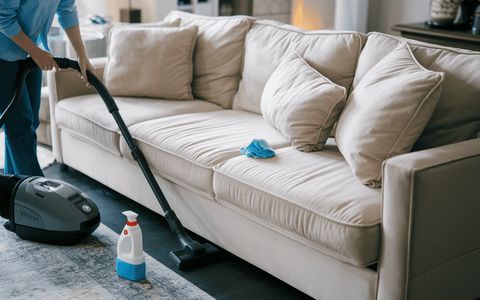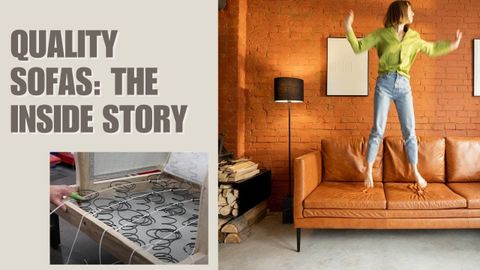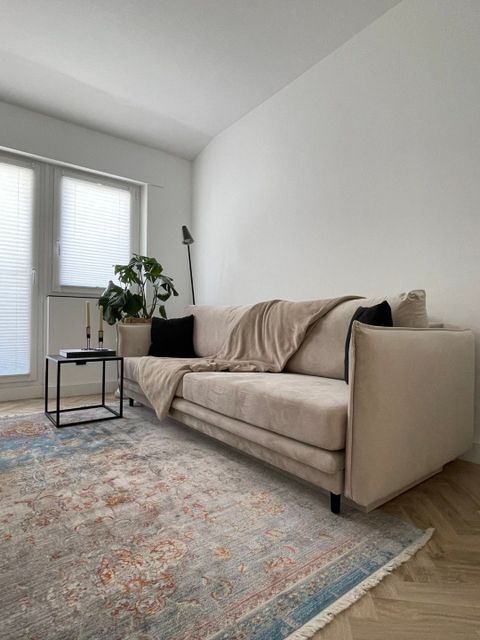In a world of fast fashion and fleeting trends, there’s something deeply satisfying about choosing materials that stand the test of time. Linen upholstery embodies this philosophy perfectly. It’s not just fabric—it’s a statement about taste, quality, and enduring style. Whether you’re furnishing a cozy living room or designing a sophisticated office space, understanding what makes linen so special can transform your approach to interior design.
Picture this: You’re settling into a comfortable chair after a long day, feeling the gentle texture of linen against your skin. There’s something inherently calming about this natural fiber that goes beyond mere aesthetics. Linen has been gracing homes and furnishings for centuries, yet it never seems to go out of style. What is it about this humble material that keeps drawing us back? The answer lies in its remarkable combination of practicality and beauty, making it a cornerstone of timeless interior design.
The Natural Appeal of Linen Fabric
Linen comes from the flax plant, a crop that’s been cultivated for thousands of years. This ancient fiber brings with it a unique set of characteristics that make it particularly appealing for home furnishings. Unlike synthetic alternatives, linen breathes naturally, allowing air to circulate through the fabric. This means your furniture stays cooler during warmer months and feels comfortable against your skin year-round. The natural texture creates subtle variations in appearance that add character rather than uniformity. Each piece of linen has its own story to tell through slight differences in weave and color. These aren’t flaws—they’re features that give each piece a distinctive personality. Think of how a well-worn linen shirt feels different from a new one, or how a vintage linen tablecloth carries memories of countless meals and gatherings. That same sense of history and lived-in charm transfers beautifully to upholstery.
Durability That Lasts Through Generations
One of the most impressive aspects of linen is its incredible strength. While many fabrics wear thin over time, high-quality linen actually becomes softer and more supple with age. This happens because the fibers gradually relax and become more pliable without losing their structural integrity. A well-made linen sofa from decades ago still looks and feels fantastic today. The durability extends beyond just physical strength. Linen resists stains better than many alternatives, especially when treated properly. Its natural properties make it less prone to attracting dirt and grime. When spills do occur, they often wipe away easily with minimal effort. The fabric also handles exposure to sunlight remarkably well, maintaining its color and texture even after years of bright light exposure. Many homeowners find that their linen furniture ages gracefully, developing a patina that speaks to its history rather than showing signs of wear.
Versatility in Modern Design Contexts
What makes linen truly special is how effortlessly it adapts to different design styles. In minimalist spaces, linen’s clean lines and neutral tones create a sense of calm and sophistication. The fabric’s natural texture adds visual interest without overwhelming the space. For those who prefer more eclectic settings, linen works beautifully with bold accent colors and patterned elements. The key is choosing the right weight and finish for your particular application. Lighter weaves work wonderfully in airy, contemporary settings while heavier, more substantial linens bring warmth and richness to traditional or rustic environments. The fabric pairs exceptionally well with natural wood tones, creating a cohesive look that feels both grounded and refined. It also complements metals, glass, and stone beautifully, making it an excellent choice for modern homes that blend various materials and textures.
Comfort Without Compromise
Comfort isn’t just about softness—it’s about how a material feels against your body and how it responds to daily use. Linen strikes the perfect balance here. It’s not rigid like some natural fibers, but it’s also not overly plush in the way that synthetic fabrics can be. The weave structure allows for excellent airflow, which means you won’t feel hot or stuffy when sitting on linen furniture. This breathability is particularly valuable in living rooms or family areas where people spend extended periods. The fabric also provides good support for the body, maintaining its shape while offering enough give to feel comfortable. Many people notice that linen furniture develops a personalized comfort level over time, becoming more familiar and cozy with regular use. It’s the kind of fabric that invites you to linger and relax rather than simply providing a place to sit.
Caring for Your Linen Upholstery
Proper maintenance ensures your linen furniture remains beautiful for years to come. Regular vacuuming removes dust and debris that accumulate in the weave. Spot cleaning with mild soap and water works well for most stains, though it’s always wise to test first on an inconspicuous area. Professional cleaning every few years helps maintain the fabric’s appearance and longevity. When storing linen items for extended periods, ensure they’re clean and dry before putting them away. Avoid direct sunlight exposure when possible, though moderate light isn’t harmful. Some people prefer to use protective treatments that enhance the fabric’s natural resistance to stains and wear. The key is treating linen with respect—don’t overhandle it or subject it to excessive stress. With proper care, your investment in linen upholstery will continue to pay dividends for generations.
Choosing Quality Over Quantity
Not all linen is created equal, and this distinction matters significantly for upholstery applications. Higher-end linens typically use finer threads and more careful weaving techniques, resulting in smoother surfaces and better drape. Look for certifications or quality marks that indicate proper processing and treatment. The weave pattern also affects performance—some weaves are more durable than others, while certain finishes provide additional benefits like wrinkle resistance or stain protection. Price often reflects quality, though it’s not always a perfect indicator. Do your research and ask questions about the manufacturing process and materials used. Consider visiting showrooms or speaking with experienced upholsterers who can demonstrate the differences between various quality levels. Investing in quality linen pays off in reduced replacement costs and greater satisfaction with your furniture choices. Remember, you’re not just buying fabric—you’re investing in the comfort and aesthetic of your home for years to come.
The appeal of linen upholstery lies in its ability to bridge the gap between past and present, tradition and innovation. It offers the best of both worlds: the timeless elegance that never goes out of style and the practical qualities that make it suitable for modern living. Whether you’re renovating a historic home or starting fresh in a new space, linen provides a solid foundation for creating beautiful, functional environments. Its natural characteristics, combined with thoughtful selection and proper care, ensure that linen upholstery remains a smart choice for anyone seeking quality and lasting beauty in their furnishings. The next time you’re considering furniture, remember that linen isn’t just a fabric—it’s a commitment to craftsmanship, comfort, and enduring style that will serve you well for years to come.













